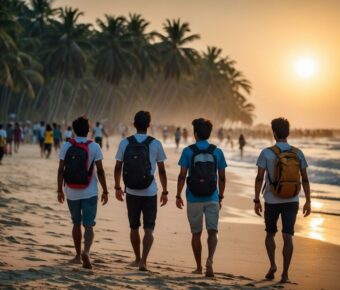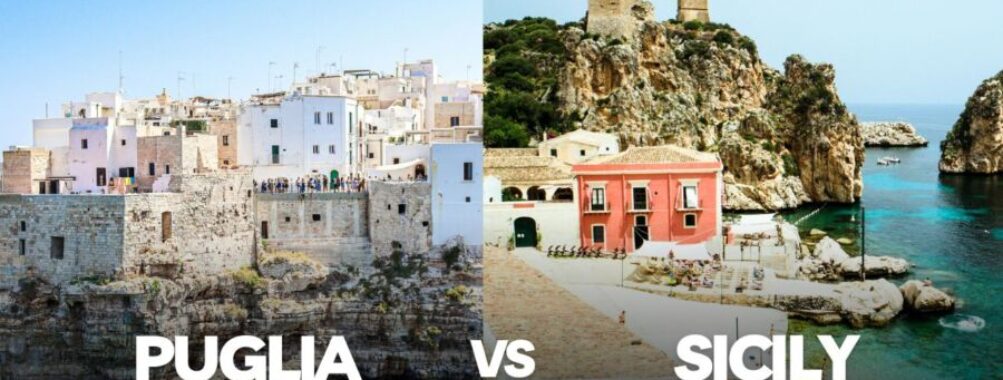
Puglia vs Sicily: 7 Surprising Differences Between Italy’s Sun-Soaked Southern Gems
Are you choosing between Puglia and Sicily for your Italian getaway? These two southern gems offer unique experiences for travelers. Puglia, the heel of Italy’s boot, charms with its whitewashed towns and olive groves.
Sicily, the largest Mediterranean island, boasts ancient ruins and stunning beaches. Both regions promise unforgettable food, rich history, and beautiful coastlines, making it tough to pick just one.
Sicily leads the way in terms of beaches, with its diverse shorelines. From sandy stretches to rocky coves, there’s a spot for every sun-seeker. Puglia’s coast is no slouch, with crystal-clear waters perfect for swimming.
Food lovers will be in heaven in both places. Puglia is famous for its olive oil and fresh seafood, while Sicily tempts with pasta alla Norma and cannoli.
Puglia might edge out Sicily for those seeking a more laid-back vibe. Its smaller towns and fewer crowds can make for a relaxing escape.
On the other hand, Sicily offers more variety in landscapes and activities. From hiking Mount Etna to exploring Greek temples, there’s always something to do.
Contents
- Geographic Overview
- Puglia’s Landscape
- Sicily’s Scenery
- Historical Significance
- Puglia’s Past
- Sicily’s History
- Cultural Identity
- Traditions of Puglia
- Sicilian Customs
- Culinary Delights
- Flavors of Puglia
- Sicilian Cuisine
- Outdoor Adventures
- Activities in Puglia
- Activities in Sicily
- Travel Tips and Essentials
- Planning Your Puglia Trip
- Essential Guide to Sicily
- Hidden Treasures
- Secret Spots in Puglia
- Undiscovered Gems of Sicily
- Frequently Asked Questions
- Which is better for a family vacation, Puglia or Sicily?
- What are the key differences between the beaches in Puglia and Sicily?
- Can you suggest an itinerary for visiting both Puglia and Sicily?
- What unique experiences does Puglia offer that differ from Sicily?
- How do the climates in Puglia and Sicily compare during the autumn months?
- What transport options are available when traveling between Puglia and Sicily?
- More Travel Guides
Geographic Overview
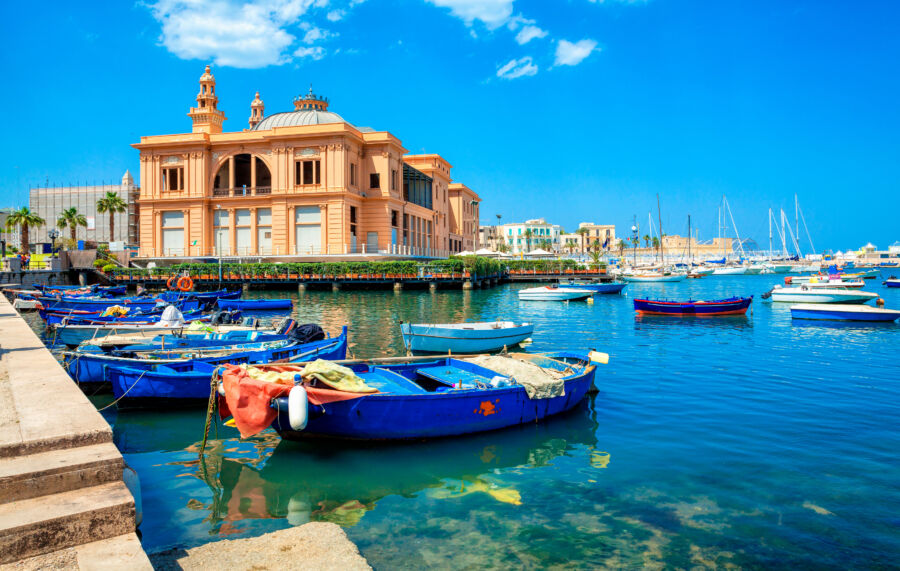
Puglia and Sicily offer distinct landscapes that shape their unique characters. These regions showcase Italy’s diverse natural beauty, from coastal stretches to inland vistas.
Puglia’s Landscape
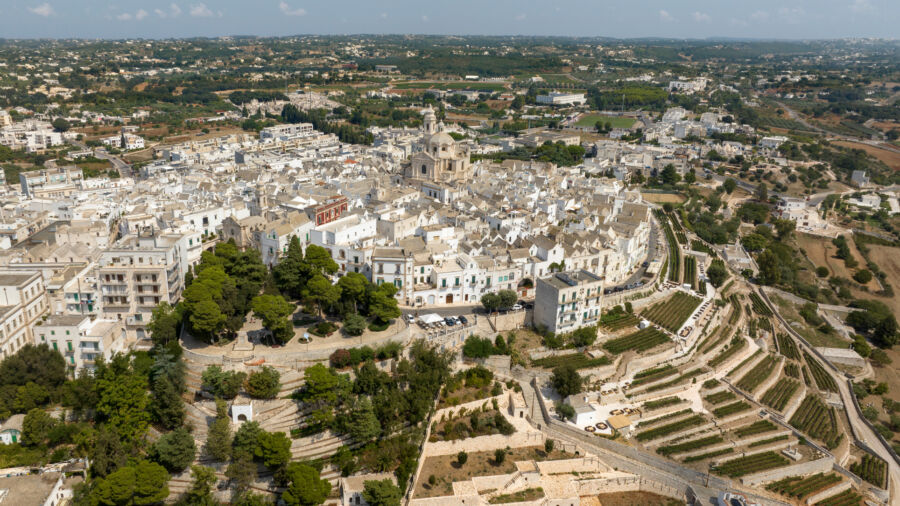
Puglia sits at the heel of Italy’s boot, boasting a long coastline along the Adriatic and Ionian Seas. The region is known for its flat terrain and rolling hills. Olive groves dominate the landscape, with ancient trees dotting the countryside as far as the eye can see.
The Itria Valley is a standout feature, famous for its cone-shaped trulli houses. These white-washed structures with conical roofs are scattered across the gentle slopes.
Puglia’s coast varies from sandy beaches to dramatic cliffs. The Gargano Peninsula juts out into the Adriatic, offering rugged cliffs and lush forests.
Sicily’s Scenery
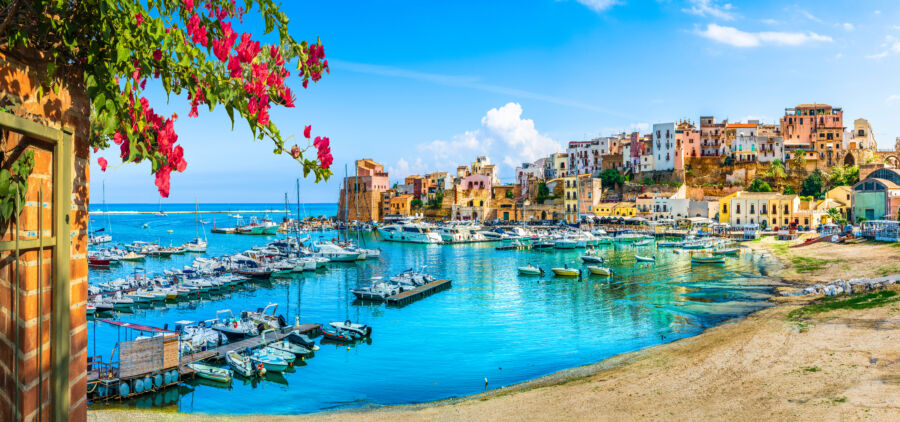
Sicily, the largest island in the Mediterranean, boasts a diverse landscape. Its centerpiece is Mount Etna, Europe’s tallest active volcano. The volcano’s slopes mix lush forests and stark lava fields.
The island’s interior is hilly and mountainous, with the Madonie and Nebrodi ranges providing stunning vistas. Fertile valleys nestle between these peaks, home to vineyards and citrus groves.
Sicily’s coastline is a mosaic of sandy beaches, rocky coves, and dramatic cliffs. The north coast features the rugged Aeolian Islands, while the south boasts long stretches of golden sand. Inland, rolling wheat fields give way to picturesque hill towns perched on rocky outcrops.
Historical Significance
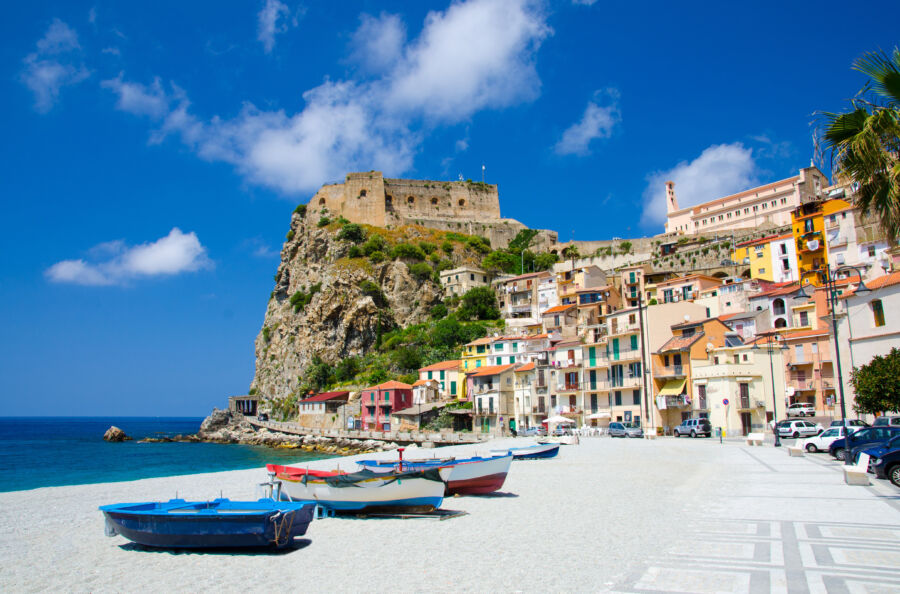
Puglia and Sicily have rich historical legacies that shape their unique identities. These regions saw waves of invaders and settlers, leaving a tapestry of cultural influences still visible today.
Puglia’s Past
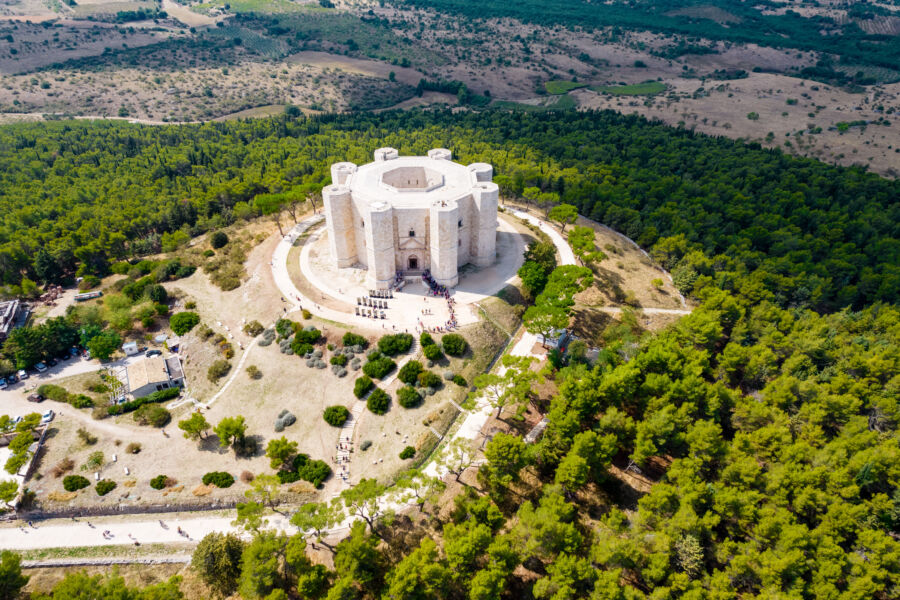
Puglia’s history is a mix of ancient civilizations and medieval marvels. The Greeks settled here first, founding cities like Taranto. Later, the Romans left their mark with roads and ports.
But it’s the Middle Ages that shine in Puglia. The Normans built stunning castles, like the mysterious Castel del Monte. This octagonal fortress is a UNESCO site and a must-see for history buffs.
The region also played a key role in the Crusades. Many knights stopped here on their way to the Holy Land. You can still see traces of their presence in the churches and castles dotting the landscape.
Sicily’s History
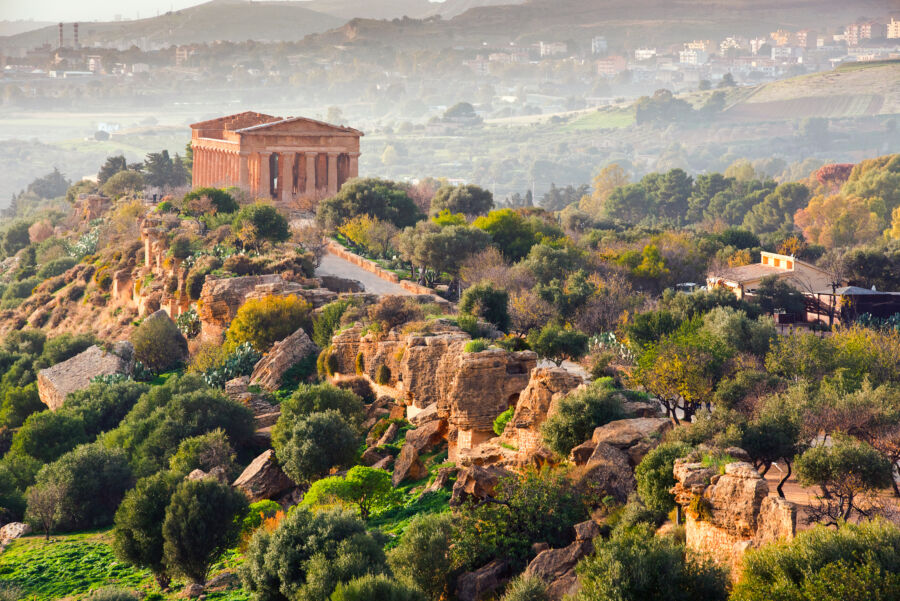
Sicily’s past is even more varied than Puglia’s. The island was a crossroads for ancient Mediterranean cultures. Greek temples still stand tall in places like Siracusa and Agrigento.
The Romans, Arabs, and Normans all ruled Sicily at different times. Each left their mark on the island’s art, architecture, and food. The result is a unique blend of cultures you won’t find anywhere else in Italy.
Don’t miss the Valley of the Temples in Agrigento. It’s one of the best-preserved Greek sites outside of Greece. The Norman-Byzantine mosaics in Palermo’s churches are also breathtaking.
See Related: New Train Routes in Europe to Explore
Cultural Identity
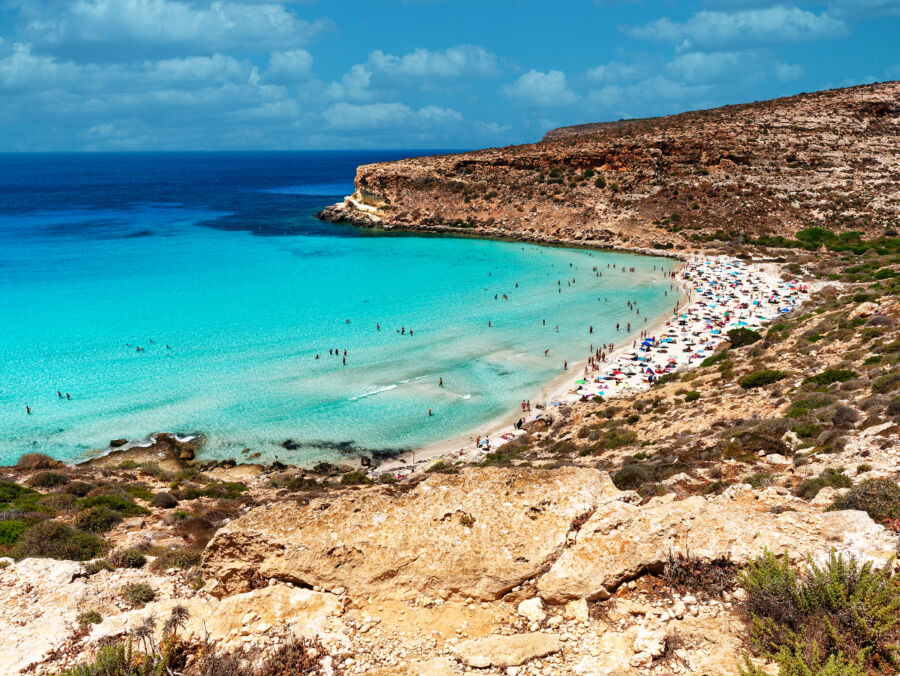
Puglia and Sicily each have unique cultural identities shaped by centuries of history and traditions. These regions offer visitors a chance to experience authentic Italian life beyond the tourist hotspots.
Traditions of Puglia

Puglia’s cultural identity is deeply rooted in its rural past. The region is famous for its trulli houses, which are cone-shaped stone dwellings that dot the countryside. These unique buildings are a symbol of Puglian culture and craftsmanship.
Food plays a big role in Puglian traditions. Locals take pride in their olive oil, wine, and cheese production. Visitors can join harvest festivals or learn to make orecchiette pasta by hand.
Puglia’s folk music and dance are still alive today. The pizzica, a lively dance once thought to cure spider bites, is performed at summer festivals. Colorful religious processions are common, especially during Holy Week.
Sicilian Customs
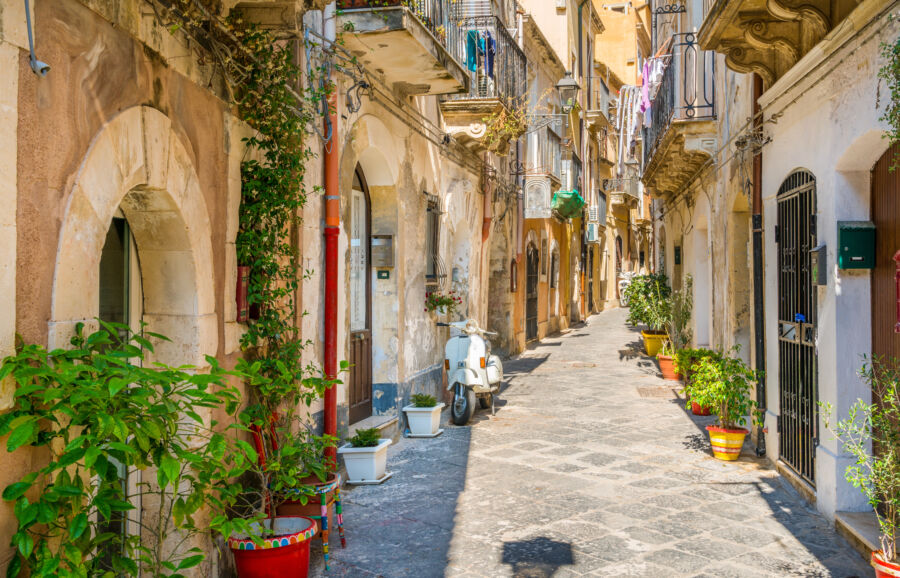
Many of its rulers have influenced Sicily’s culture over the centuries. Greek, Roman, Arab, and Norman traditions left their mark on the island’s customs.
Food is central to Sicilian life. Street markets buzz with activity as vendors sell local specialties.
Arancini (fried rice balls) and cannoli are must-try treats. Family gatherings often revolve around long, multi-course meals.
Sicilians are proud of their artistic traditions. Puppet theaters tell tales of knights and adventure, and colorful horse-drawn carts decorated with intricate paintings are still used in festivals.
Religious festivals are important community events in Sicily. The feast of Santa Rosalia in Palermo draws huge crowds each July, and many towns hold unique celebrations throughout the year.
Culinary Delights
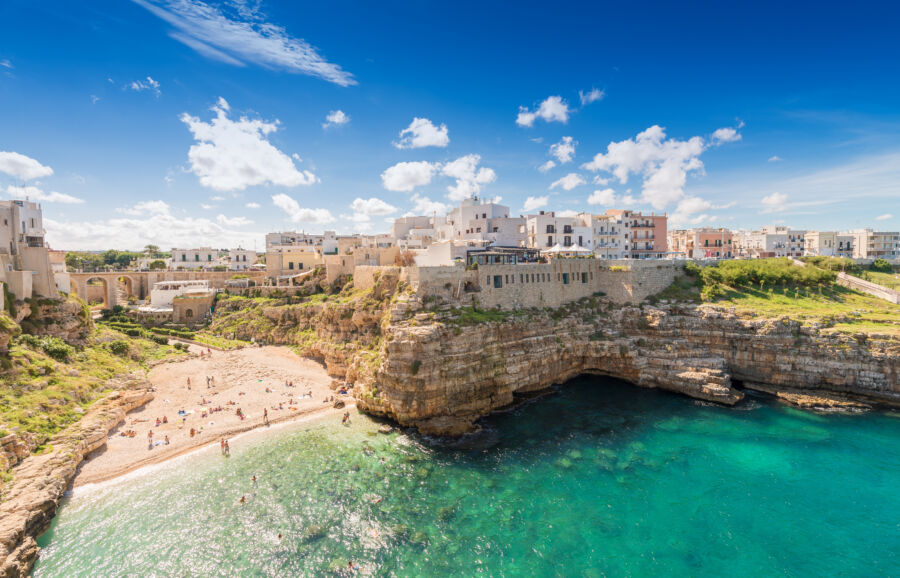
Italy’s southern regions offer a feast for the senses. Puglia and Sicily each bring unique flavors, showcasing local ingredients and centuries-old recipes that will make your taste buds dance.
Flavors of Puglia

Puglia’s cuisine is all about simple, rustic goodness. The region’s star is olive oil – some of the best you’ll find in Italy. Locals use it generously in almost every dish.
Orecchiette pasta is a Puglian favorite. These little “ear” shapes perfectly catch savory sauces. Try them with cime di rapa (broccoli rabe) for a classic combo.
Seafood lovers won’t be disappointed. Fresh catches from the Adriatic and Ionian seas appear on menus daily. Grilled octopus is a must-try.
Don’t miss Puglia’s hearty bread. The region is known as Italy’s breadbasket for good reason. Pair a crusty loaf with local cheese for a simple, satisfying snack.
Wine enthusiasts should sip some Primitivo. This bold red pairs well with Puglia’s robust flavors.
Sicilian Cuisine

Sicily’s food tells the story of its many invaders. Arab, Greek, and Spanish influences mix with Italian traditions to create unique tastes.
Arancini is a Sicilian staple. These crispy rice balls are stuffed with meat, cheese, or veggies. They make a great on-the-go snack.
The island’s seafood is top-notch. Try pasta con le sarde, featuring sardines and wild fennel. It’s a flavor explosion you won’t forget.
Sweet tooths will love Sicilian desserts. Cannoli, filled with creamy ricotta, are famous worldwide. But don’t overlook cassata, a sponge cake soaked in liqueur and layered with sweet ricotta and candied fruit.
Sicily’s wines are gaining recognition. Try a glass of Nero d’Avola with your meal. Its full-bodied flavor complements many Sicilian dishes.
Outdoor Adventures
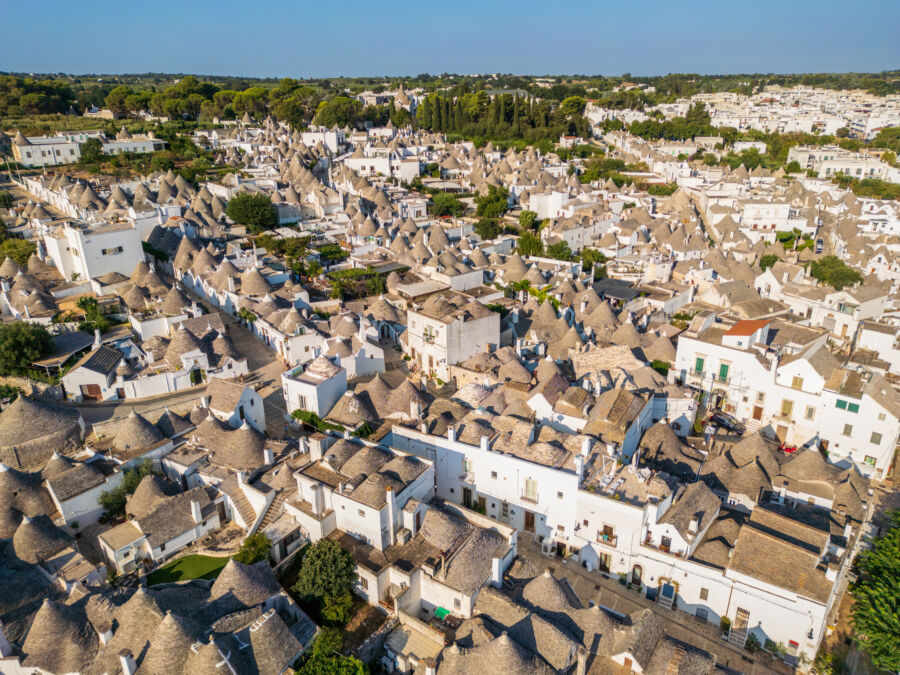
Puglia and Sicily offer amazing outdoor activities for nature lovers. Both regions have beautiful beaches, stunning landscapes, and unique experiences for travelers.
Activities in Puglia
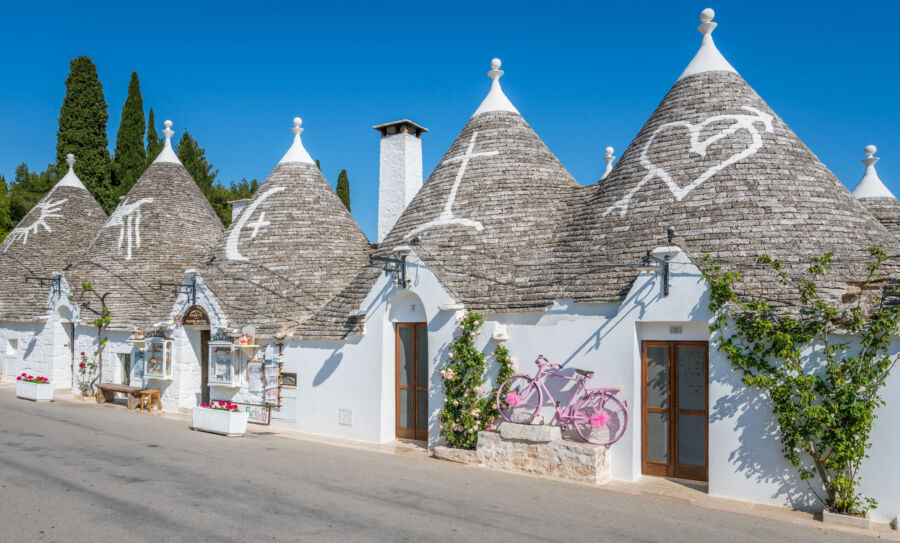
Puglia’s coastline is perfect for beach lovers. The region has many sandy beaches with clear blue water. Visitors can swim, sunbathe, or try water sports like kayaking and paddleboarding.
Inland, the Itria Valley is great for hiking and biking. The area is full of olive groves and charming towns like Alberobello. Tourists can explore the famous trulli houses and enjoy the peaceful countryside.
Book Things To Do, Attractions, and Tours | GetYourGuide offers guided tours of Puglia’s natural wonders. These include boat trips along the coast and walks through olive groves.
Activities in Sicily

Sicily is an outdoor enthusiast’s dream. The island has diverse landscapes, from beaches to mountains. Mount Etna, Europe’s largest active volcano, is a top attraction for hikers and nature lovers.
Beach activities are popular in Sicily, too. Taormina has beautiful beaches with stunning views. Visitors can relax on the sand or try snorkeling in the clear waters.
Sicily’s national parks offer great hiking trails. The Madonie and Nebrodi parks have beautiful forests and mountain scenery. Travelers can spot unique wildlife and enjoy breathtaking views.
Viator: Travel Tours, Activities, and Things to Do | 2025 offers many outdoor adventure options in Sicily, from hiking tours to boat trips around the island.
See Related: Best Cities in Europe to Enjoy Winter Without the Crowds
Travel Tips and Essentials
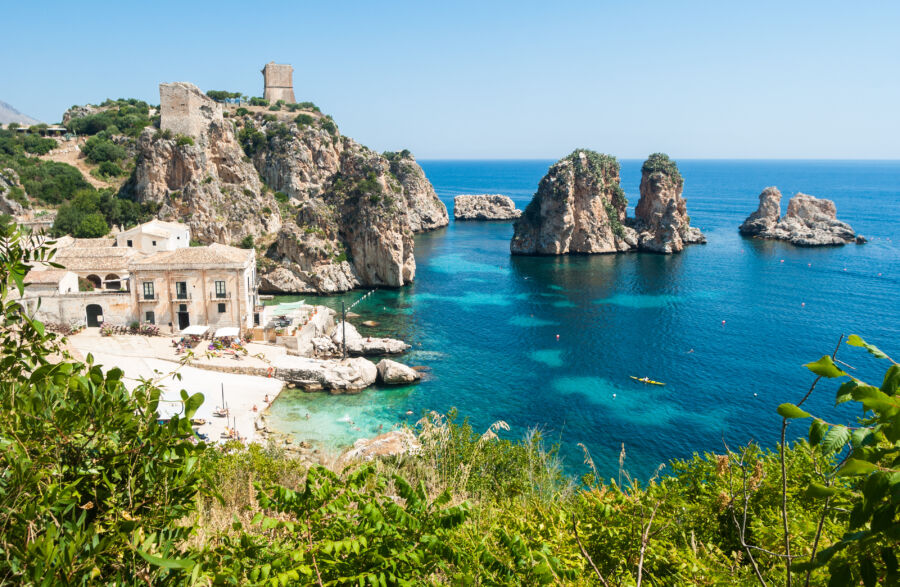
Planning a trip to Puglia or Sicily? These tips will help you make the most of your Italian adventure. From must-see spots to practical advice, we’ve covered you for an unforgettable journey.
Planning Your Puglia Trip
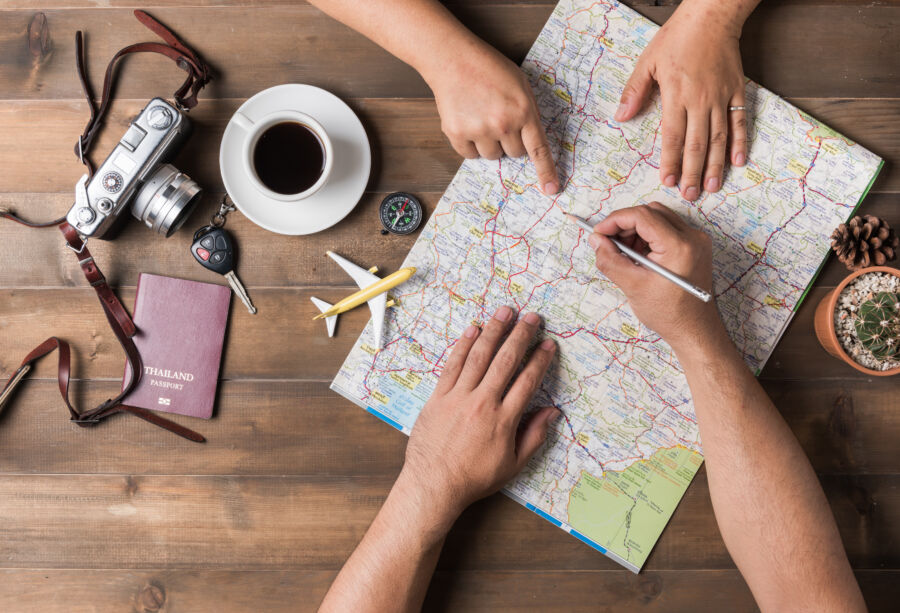
Puglia’s charm lies in its laid-back vibe and gorgeous beaches. Start your trip in Bari, the region’s bustling capital.
Wander through the old town’s winding streets and grab a slice of focaccia. Don’t miss Lecce, known as the “Florence of the South” for its stunning Baroque architecture.
Rent a car to explore Puglia’s countryside. You’ll discover whitewashed towns and ancient olive groves.
Book your accommodations in advance, especially during summer. The region gets busy!
Pack light, breezy clothes and comfy shoes. Puglia’s weather is hot and sunny most of the year. Bring a swimsuit – the beaches are amazing!
Essential Guide to Sicily

Sicily is a treasure trove of history and natural beauty. Start your journey in Palermo, the island’s vibrant capital. Explore bustling markets and try street food like arancini.
Don’t skip Catania, nestled at the foot of Mount Etna. Take a day trip to Europe’s largest active volcano. It’s a sight you won’t forget!
Book flights early for the best deals. Sicily can be pricey in peak season. Consider visiting in spring or fall for milder weather and fewer crowds.
Learn a few Italian phrases. Sicilians appreciate the effort! And leave room in your suitcase for local goodies like wine and ceramics.
Hidden Treasures
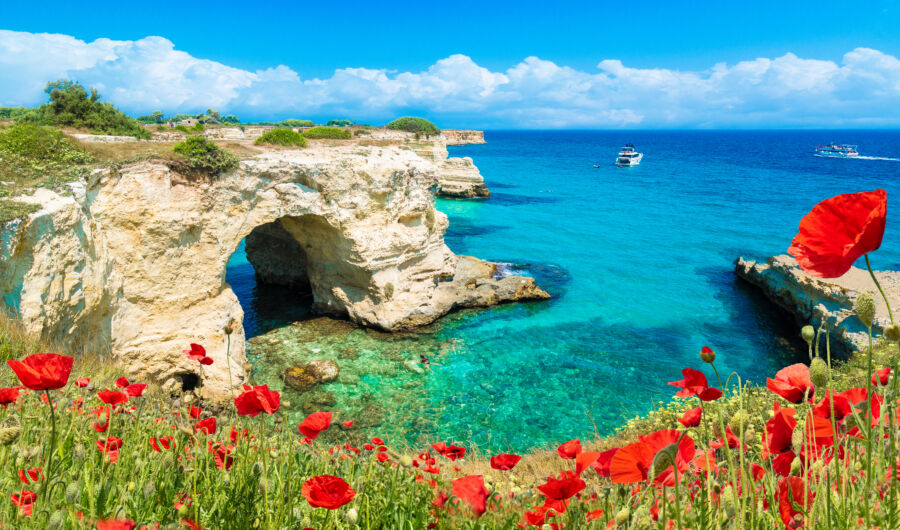
Puglia and Sicily hide some amazing spots off the beaten path. These lesser-known gems offer a chance to experience local culture away from tourist crowds.
Secret Spots in Puglia

Gallipoli’s old town is a hidden gem on Puglia’s coast. This tiny island connected by a bridge has narrow streets and beautiful beaches. You must see the fish market by the port.
The Salento area in southern Puglia is full of surprises. Check out the sea caves near Santa Maria di Leuca. You can take a boat tour or swim in the crystal-clear waters.
Locals know about Ostuni’s underground olive oil mills. These ancient caves show how olive oil was made centuries ago. It’s a cool break from the hot sun.
Castro is a small coastal town with a stunning castle. The views from the fortress walls are breathtaking. Don’t miss the seaside grottos nearby.
Undiscovered Gems of Sicily
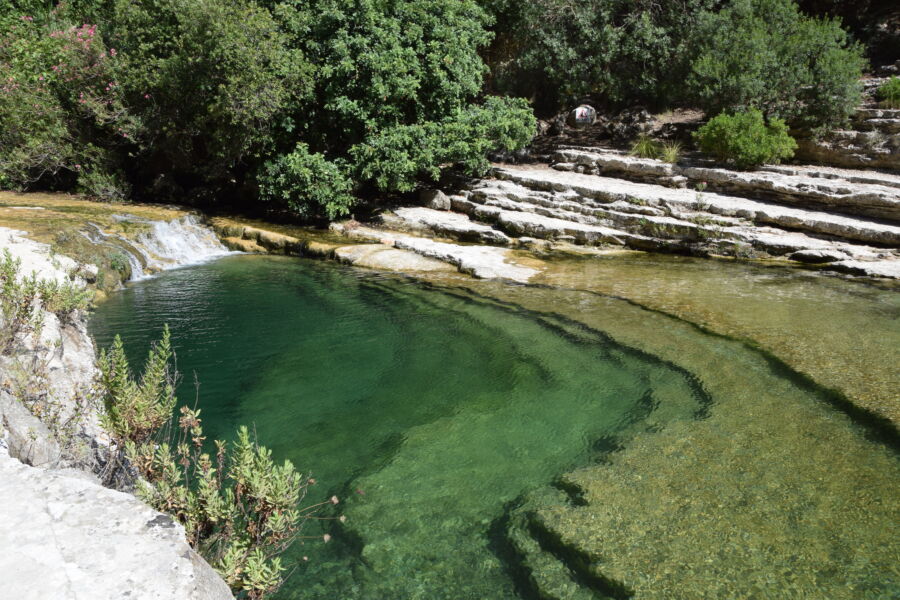
Sicily has many hidden treasures, too. The Necropolis of Pantalica is an ancient burial site with over 5,000 tombs cut into the rock. It’s a peaceful place to explore.
Cavagrande del Cassibile is a natural reserve with deep canyons and clear pools. Hike down to swim in the refreshing water. It’s a local favorite on hot days.
The castle of Mussomeli seems to grow out of the rocky hill it sits on. It’s less crowded than other Sicilian castles but just as impressive.
Scala dei Turchi is a stunning white cliff by the sea. The natural “staircase” formed by erosion is perfect for sunbathing. Go early to beat the crowds.
See Related: The Origins of the Renaissance: Why It Started in Italy
Frequently Asked Questions
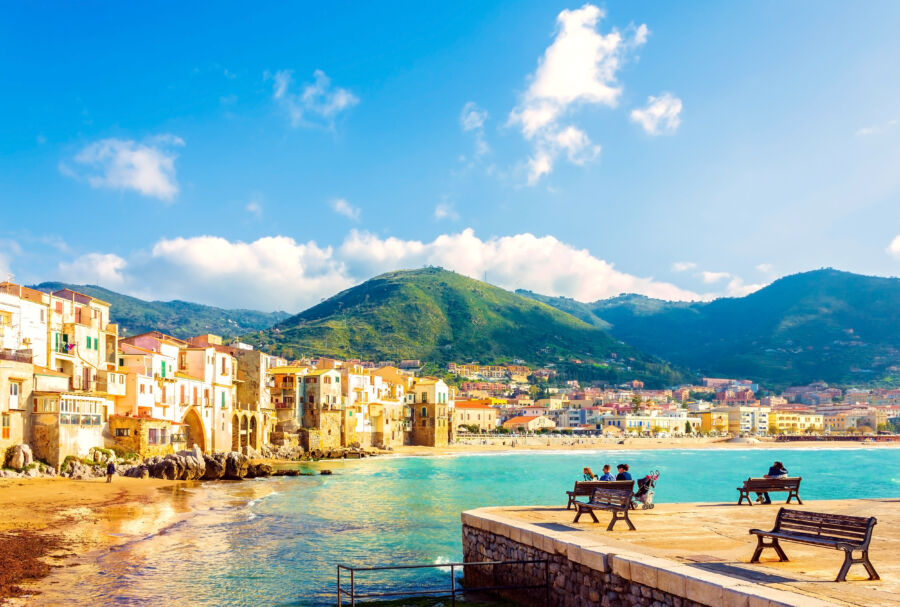
Planning a trip to southern Italy? Let’s tackle some common questions about Puglia and Sicily to help you make the most of your Italian adventure.
Which is better for a family vacation, Puglia or Sicily?
Puglia is great for families who want a laid-back beach holiday. The region has calm waters and family-friendly resorts.
Sicily offers more variety, with historical sites, beaches, and natural wonders. It’s a bit more spread out, so you must plan your itinerary carefully.
What are the key differences between the beaches in Puglia and Sicily?
Puglia’s beaches are known for their soft sand and clear waters. You’ll find long stretches of coastline perfect for sunbathing.
Sicily’s beaches are more diverse. Some have white sand resembling the Caribbean, while others are rocky coves ideal for snorkeling.
Can you suggest an itinerary for visiting both Puglia and Sicily?
Start in Puglia with 5 days exploring Bari, Alberobello, and the coastal towns. Then, take a ferry or flight to Sicily for 7-10 days.
Visit Palermo, Mount Etna, Syracuse, and Taormina. This gives you a taste of both regions without rushing.
What unique experiences does Puglia offer that differ from Sicily?
Puglia is famous for its trulli houses in Alberobello. These cone-shaped buildings are unique to the region.
The area also has ancient olive groves and the beautiful Itria Valley. For a truly local experience, stay in a Masseria, a converted farmhouse.
How do the climates in Puglia and Sicily compare during the autumn months?
Both regions enjoy mild autumn weather. Puglia tends to be slightly cooler, with temperatures around 15-20°C (59-68°F).
In October, Sicily stays warmer longer, reaching 20-25°C (68-77°F). Both areas see fewer tourists in the fall, making it a great time to visit.
What transport options are available when traveling between Puglia and Sicily?
The easiest way to travel between Puglia and Sicily is by plane. Flights connect Bari or Brindisi to Palermo or Catania.
Take a train to the tip of Italy’s boot for a scenic route, then catch a ferry to Sicily. Renting a car gives you freedom to explore, but remember you’ll need to take it on the ferry.

